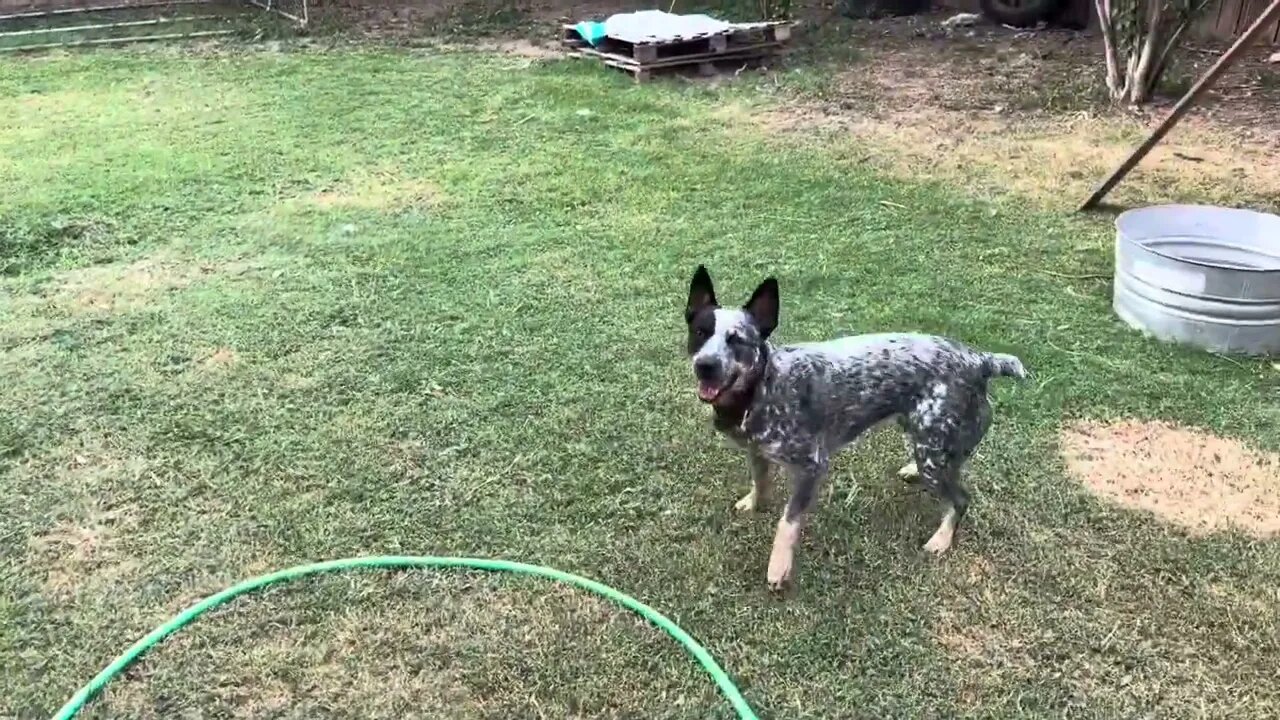Premium Only Content

From cut Pup to a nice Room and a great dog companion #dog #puppy #australiancattledog #blue #heeler
The Australian Cattle Dog (ACD), or simply Cattle Dog, is a breed of herding dog developed in Australia for droving cattle over long distances across rough terrain. This breed is a medium-sized, short-coated dog that occurs in two main colour forms. It has either red or black hair distributed fairly evenly through a white coat, which gives the appearance of a "red" or "blue" dog.
The Australian Cattle Dog is a sturdy, muscular, compact dog that gives the impression of agility and strength. It has a broad skull that flattens to a definite stop between the eyes, with muscular cheeks and a medium-length, deep, powerful muzzle. The ears are pricked, small to medium in size and set wide apart, with a covering of hair on the inside. The eyes are oval and dark, with an alert, keen expression. The neck and shoulders are strong and muscular; the forelegs are straight and parallel; and the feet round and arched, with small, sturdy toes and nails.[6]
The Australian Cattle Dog breed standard states that it should have well-conditioned muscles, even when bred for companion or show purposes, and that its appearance should be symmetrical and balanced, with no individual part of the dog exaggerated. It should not look either delicate or cumbersome, as either characteristic limits the agility and endurance that is necessary for a working dog.[6]
Size
The female Australian Cattle Dog measures approximately 43–48 centimetres (17–19 in) at the withers, and the male measures about 46–51 centimetres (18–20 in) at the withers. The dog should be longer than tall, that is, the length of the body from breast bone to buttocks is greater than the height at the withers, in a ratio of 10 to 9.[6] An Australian Cattle Dog in good condition weighs around 18–25 kilograms (40–55 lb).
There are two accepted coat colours, red and blue. Chocolate and cream are considered to be faults. Blue dogs can be blue, blue mottled, or blue speckled with tan on the legs and chest and white markings and a black patch or "mask" on one or both sides of the head. Red dogs are evenly speckled with solid red markings and similarly to the blue dogs can have a brown (red) patch "mask" on one or both sides of the head and sometimes on the body.
Both red dogs and blue dogs are born white (except for any solid-coloured body or face markings) and the red or black hairs show from around 4-weeks of age as they grow and mature. The distinctive adult colouration is the result of black or red hairs closely interspersed through a predominantly white coat. This is not merle colouration (a speckled effect that has associated health issues), but rather the result of the ticking gene. A number of breeds show ticking, which is the presence of colour through white areas, though the overall effect depends on other genes that will modify the size, shape and density of the ticking.[7]
-
 12:12
12:12
The Shannon Joy Show
12 hours ago🔥Carcinogens & Fetal Cells In Your New ‘Universal Vaccine’🔥
5422 -
 10:38
10:38
ariellescarcella
10 hours agoOnlyFans Models Fake Being Trans : Queer Activists Are PISSED
86 -
 8:00
8:00
Congressman Eli Crane
14 hours agoThe D.C. Crime Problem | Democrats' Greatest Lies – Vol.2
17.1K3 -
 17:54
17:54
Dr Disrespect
17 hours agoDR DISRESPECT vs VAN DAMME in Hitman 3
72.8K11 -
 2:05:26
2:05:26
Side Scrollers Podcast
19 hours ago4Chan SUES UK Government + Craig Has Mental Illness Fatigue + Knight Rider REBOOT | Side Scrollers
32.4K8 -
 19:26
19:26
GritsGG
1 day agoChat Picked My Hair Color! All Pink Loadout & Operator Challenge!
28.3K4 -
 10:32
10:32
Nikko Ortiz
1 day agoFunniest Fails Of The Month
56.7K8 -
 1:27:34
1:27:34
TruthStream with Joe and Scott
4 days agoArchitect Richard Gage: 911 truths and more #482
32.7K7 -
 LIVE
LIVE
Lofi Girl
2 years agoSynthwave Radio 🌌 - beats to chill/game to
206 watching -
 56:48
56:48
The HotSeat
14 hours agoI'm NOT Sorry! Guns Aren’t the Problem—Godless Culture Is
37.2K30